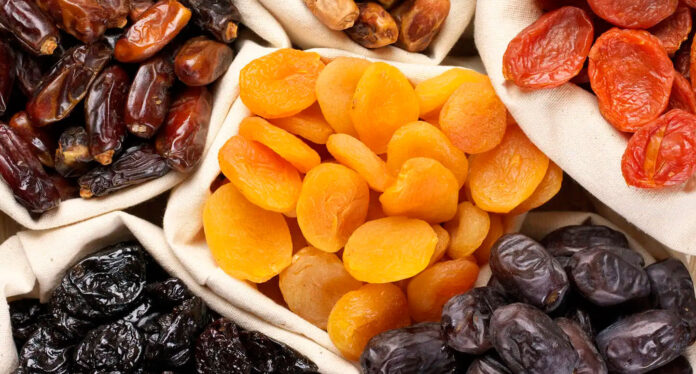By Rabbi Hayim Asher Arking and Rabbi Ezra Ghodsi
What is the significance of Tu B’Shevat?
Each year features four distinct occasions that mark the beginning of a specific New Year, meaning there are four Rosh Hashanahs. The first day of Nissan serves as Rosh Hashanah for the counting of a king’s reign. The first day of Elul is designated for determining ma’aser from animals. The first day of Tishrei, Rosh Hashanah, is the time when all people are judged, and it is also pertinent to the counting of years for events such as yovel and shemitah. Finally, the fifteenth of Shevat – Tu B’Shevat (where “Tu” refers to the Hebrew letters ט”ו, corresponding to fifteen) – is the New Year for trees. This date marks the beginning of the year for purposes related to terumah and orlah.
What changes are made in the tefillah?
Tachanun is not recited on Tu B’Shevat, nor is it recited during Minha prior to Tu B’Shevat. If Tu B’Shevat falls on Shabbat, “Tsidkatecha” is also not recited.
Just as on Rosh Hashanah we pray for a good year, it is customary on Tu B’Shevat to recite berachot and prayers for the year’s prosperity. As such, we recite berachot for all types of fruits, vegetables, and foods. Reciting a beracha brings blessing to all living flora on Earth, the source of our sustenance. For example, when one recites the beracha of ha’ets, it invokes a blessing upon all fruit trees globally, enabling them to bear fruit abundantly.
Is everything kosher?
In general, one should be aware of the status of terumot and ma’asrot, as well as the varying opinions on these matters. Additionally, for guidance on ensuring your produce is bug-free, please refer to the JSOR Produce Guide available at https://ask.jsor.org/t/produce-checking-guide/171. This guide provides detailed instructions for how to check a wide variety of fruits and vegetables.
Is there a special prayer to say before eating the fruits?
It is a long-standing Syrian custom to recite the Arabic translation of the Aseret Hadibrot found in Shir Ushvaha (page 515) on Tu B’Shvat. Many also have the custom of reciting certain specific passages from the Torah, Mishnah, and Zohar that are relevant to the particular fruit they are eating, as detailed in the Sefer Pri Ess Hadar. There is also a custom to eat a dish of etrog jelly, made from the etrog used as part of the Arba Minim on the previous Sukkot. One should say a prayer that he should merit to find a beautiful etrog to use for the mitzva on the following Sukkot.
What is the proper order to recite the berachot?
When reciting berachot outside of a bread meal, the typical order is as follows:
1. Mezonot
2. Hagefen (Note: when reciting Kiddush, the hagefen needs to be said first.)
3. Ha’ets
4. Ha’adamah
5. Shehakol
Why is there a preferred order?
The order of blessings is determined by the specificity and descriptiveness of each beracha. A more focused blessing provides a more enhanced expression of gratitude to Hashem. Mezonot, the blessing recited over wheat and other grains, occupies the highest position. It is the most descriptive in its praise, as we mention the benefit we have from Hashem’s creation: that these foods are a source of sustenance.
Following mezonot are the blessings of hagefen (on wine and grape juice), ha’ets (for fruits from trees), and ha’adamah (for fruits from the ground). Each of these berachot describes where the food originates from, and the order reflects the decreasing specificity of each blessing. Hagefen specifies the exact source of origin – the vine, offering the most detailed description. Ha’ets, while acknowledging that the fruit grows on a tree, is a more general beracha as it does not specify the type of tree. Ha’adamah, while mentioning the source as “the ground,” remains the most general, encompassing a wide range of fruits and vegetables, including those that grow on bushes.
Finally, the least descriptive beracha, shehakol (“that all was created with His Word”), is recited last. This blessing simply acknowledges creation without providing any specific details about the origin or nature of the food.
What if I mistakenly recited a beracha not in the preferred order?
Although the berachot are supposed to be recited in the proper order, reciting a beracha out of order does not invalidate the beracha itself. However, it is important to note that in some cases a more specific beracha can be covered by a broader beracha. For example, if one mistakenly recites the beracha of ha’adamah intending to include an orange, a subsequent blessing of ha’ets on that same orange would not be permissible. However, if the ha’adamah beracha was recited on a vegetable without the intention of including the orange, the orange would not be covered by the initial beracha, and a separate ha’ets would still be required.
If I am eating different types of fruits, on which one do I recite ha’ets?
If a platter of many different fruits is served, for example, dates, figs, apples, etc. then the ha’ets is recited on one of the Shiv’at HaMinim (the seven agricultural products mentioned in the Torah as being special to the Land of Israel). There is also a specific order within this group. It is based on which fruit is mentioned closest to the word ‘erets’ in the pasuk ארץ חטה ושעורה וגו’. Therefore, the first beracha would be on the olives, and if there are no olives, then on the dates. If there are no dates, then it is said on the grapes, the figs, and then pomegranates.
What if there are no fruits from the Shiv’at HaMinim?
If the fruits that are served do not include one of the Shiv’at HaMinim, then the beracha is recited on a fruit that is whole. If there are many whole fruits, then you recite the beracha on the fruit that is generally more desirable to you. This is done out of honor for the blessing.
These rules also apply to any assortment of foods that are of the same beracha, such as bananas, watermelon, and cantaloupe; or cookies, cake, and pretzels.
If there is a shehehianu fruit, when would shehehianu be said?
According to many opinions, a shehehianu fruit is regarded as the “preferred fruit.” Therefore, if there are fruits from the Shiv’at HaMinim, the ha’ets would be recited on one of them. When only eating regular fruits, one should make a beracha of ha’ets on the shehehianu fruit, provided it has not been cut up. (Others say that a shehehianu fruit always takes precedence.)
What fruits require a shehehianu?
One can only recite shehehianu on produce that is seasonal and not available year-round. Nowadays, many seasonal fruits are still readily available to be purchased year-round, as they are imported from countries with warm climates, and would not require a shehehianu. If one wants to recite a shehehianu on a new fruit, they should get a more exotic one, like starfruit, passionfruit, etc.
What if I do not enjoy the taste?
If one knows that he does not enjoy the taste of a specific fruit and does not feel any happiness in eating the new fruit, a shehehianu should not be recited.
Should I recite ha’ets or shehehianu first?
It is preferable to recite ha’ets first, followed by a shehehianu, and then eat from the fruit. Some have the custom to recite the shehehianu first followed by the ha’ets.
What if I forgot to recite shehehianu?
If one is still in the middle of eating the fruit, he can still recite the beracha. However, if one is finished eating the fruit, the beracha can no longer be recited.
In Summary: When one is ready to partake of the Tu B’Shevat table, he should begin with a beracha of mezonot on cookies or cakes. Next, he should recite hagefen upon wine or grape juice. Then he should say the beracha of ha’ets on olives, dates, grapes, figs, or pomegranates (in that order). Otherwise, ha’ets is recited on any fruit of his choice if it is a whole fruit. If there is a fruit that one will be reciting shehehianu on, then that will take preference over other fruit. Afterward, one recites ha’adamah on the vegetable he generally prefers. Shehakol is the final beracha recited on food.



